Digital Modulation Techniques in
Mobile Communications
Fahredd'n Sadikoglu
1
�
Digital Modulation Technique
Sender Destination
Message Message
Modulation Channel Demodulation
Fahredd'n Sadikoglu
2
�
Modulation Techniques
Modulation is the process of encoding information from a
message source in a manner suitable for transmition.
The ultimate goal of a modulation technique is to transport the
message signal through a radio channel with the best possible
quality while occupying the least amount of radio spectrum.
Sender
Modulation Channel
Message
D(t)
C(t)=A COS (wt+Φ)
Fahredd'n Sadikoglu
3
�
Modulation may be done by varying the amplitude
,phase, or frequency of a high frequency carrier in
accordance with the amplitude of the message
signal.
C(t)=A COS (wt+Φ)
ASK FSK PSK
�
Amplitude Shift Keying (ASK)
- Pulse shaping can be employed to remove spectral
spreading.
- ASK demonstrates poor performance, as it is heavily
affected by noise and interference.
�
Frequency Shift Keying (FSK)
- Bandwidth occupancy of FSK is dependant on the spacing of the
two symbols. A frequency spacing of 0.5 times the symbol period
is typically used.
- FSK can be expanded to a M-ary scheme, employing multiple
frequencies as different states.
-
�
Phase Shift Keying (PSK)
- Binary Phase Shift Keying (BPSK) demonstrates better performance
than ASK and FSK.
- PSK can be expanded to a M-ary scheme, employing multiple phases
and amplitudes as different states.
- Filtering can be employed to avoid spectral spreading.
�
PSK & DPSK
Fahredd'n Sadikoglu
8
�
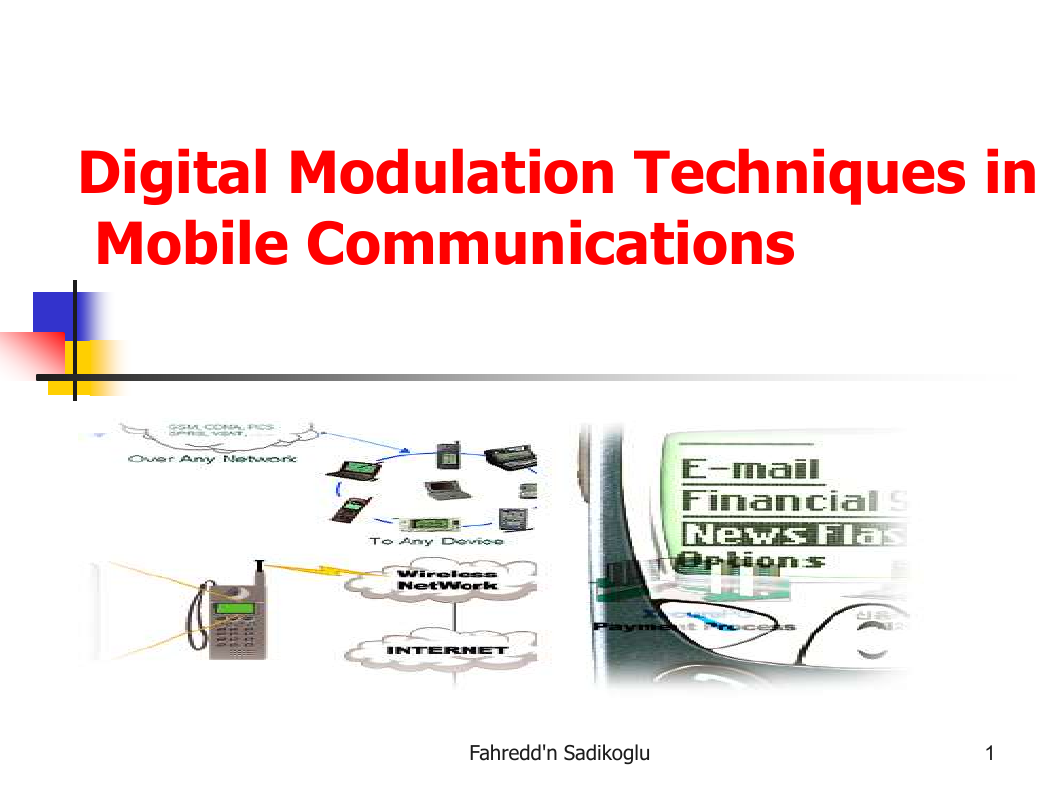

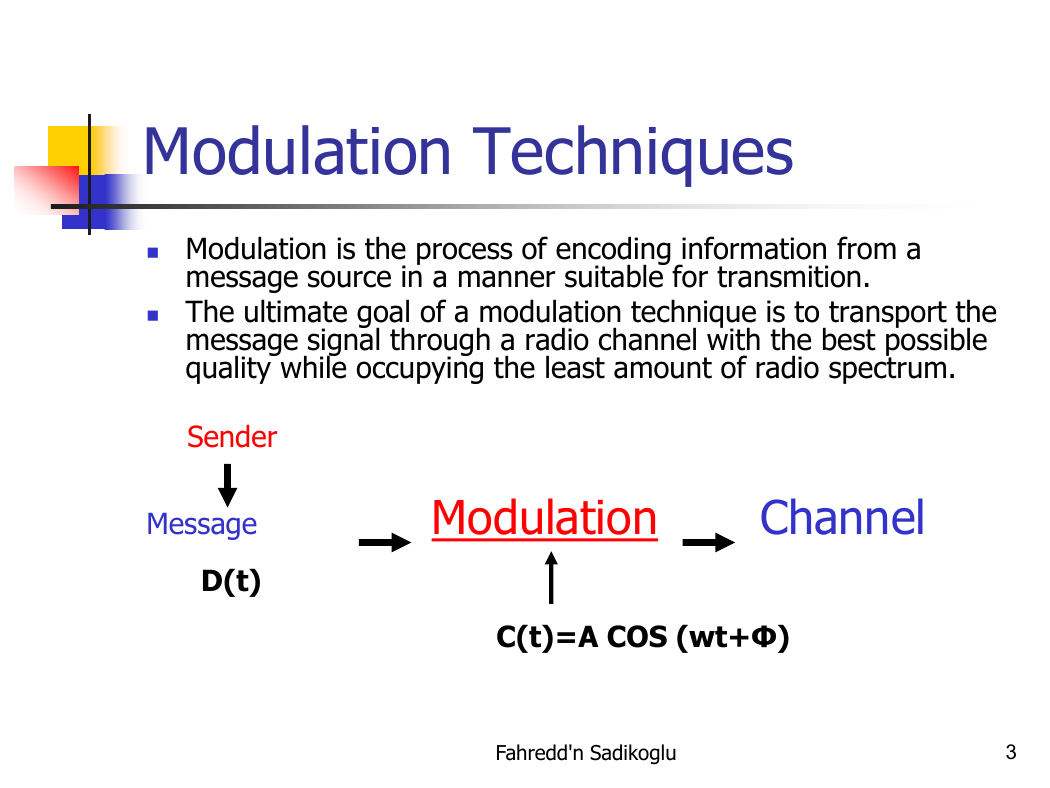
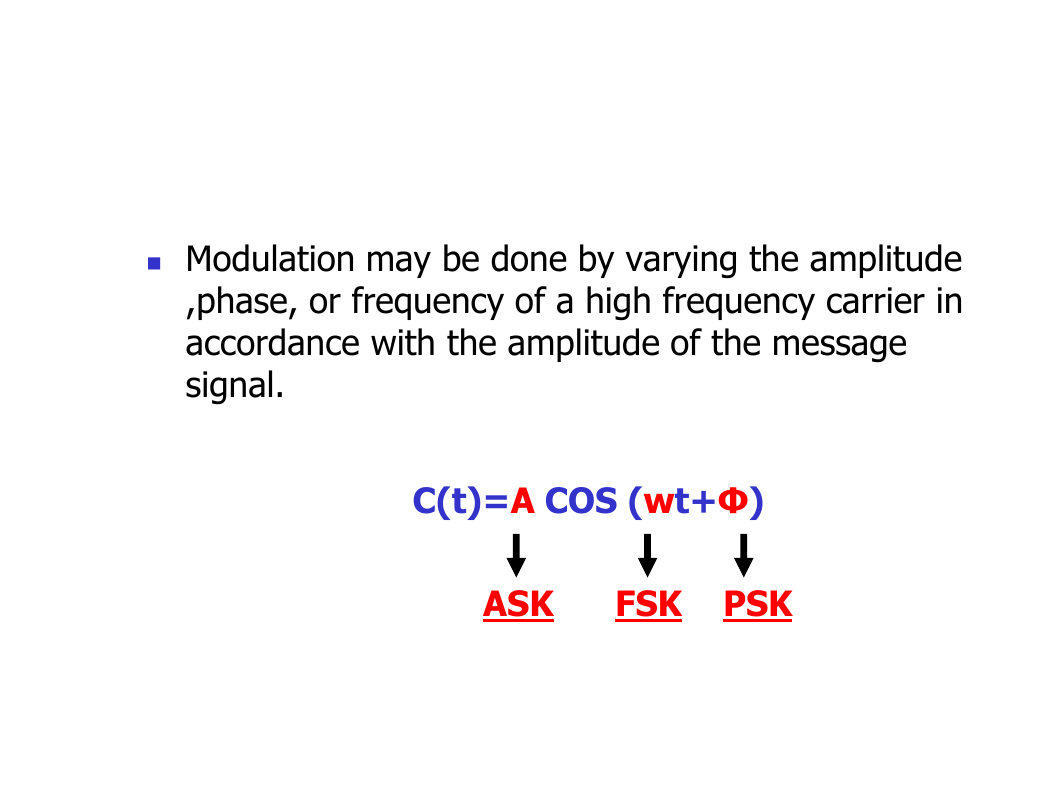
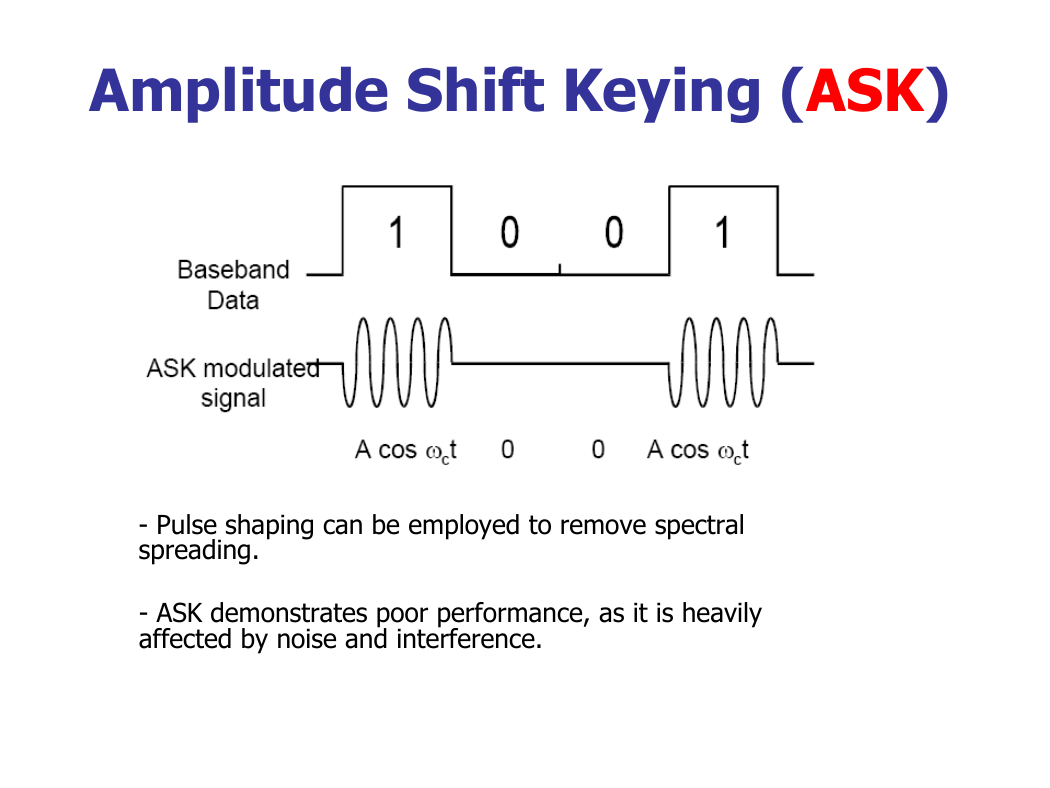
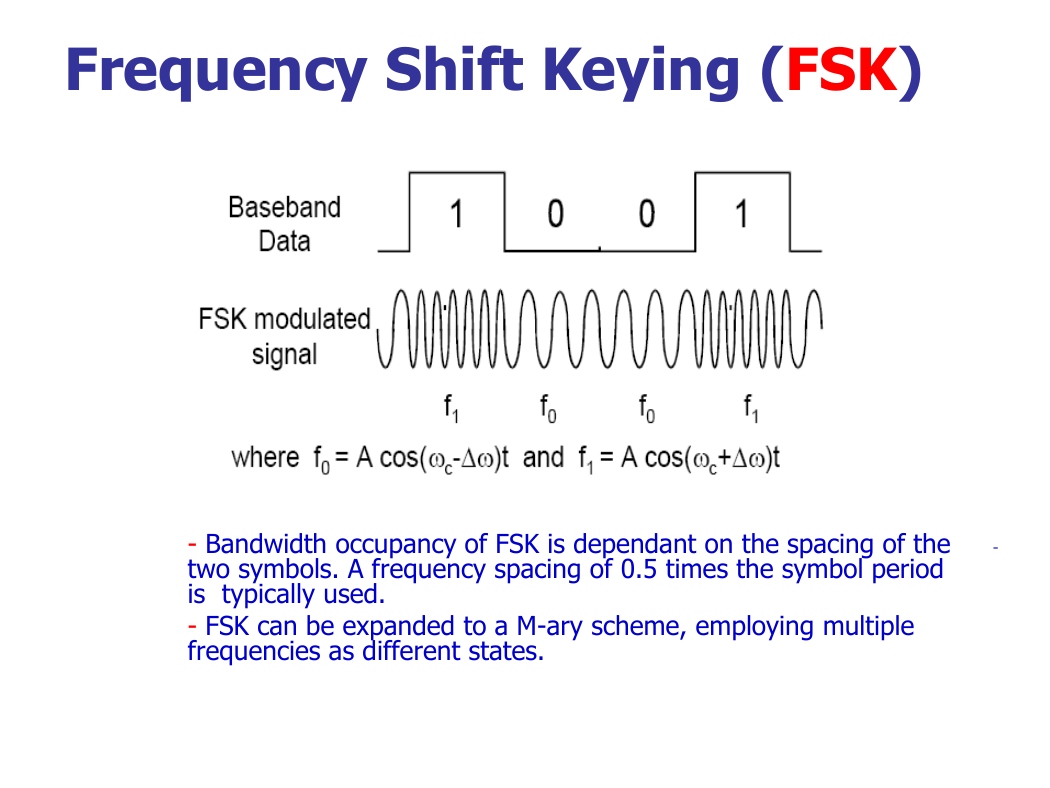
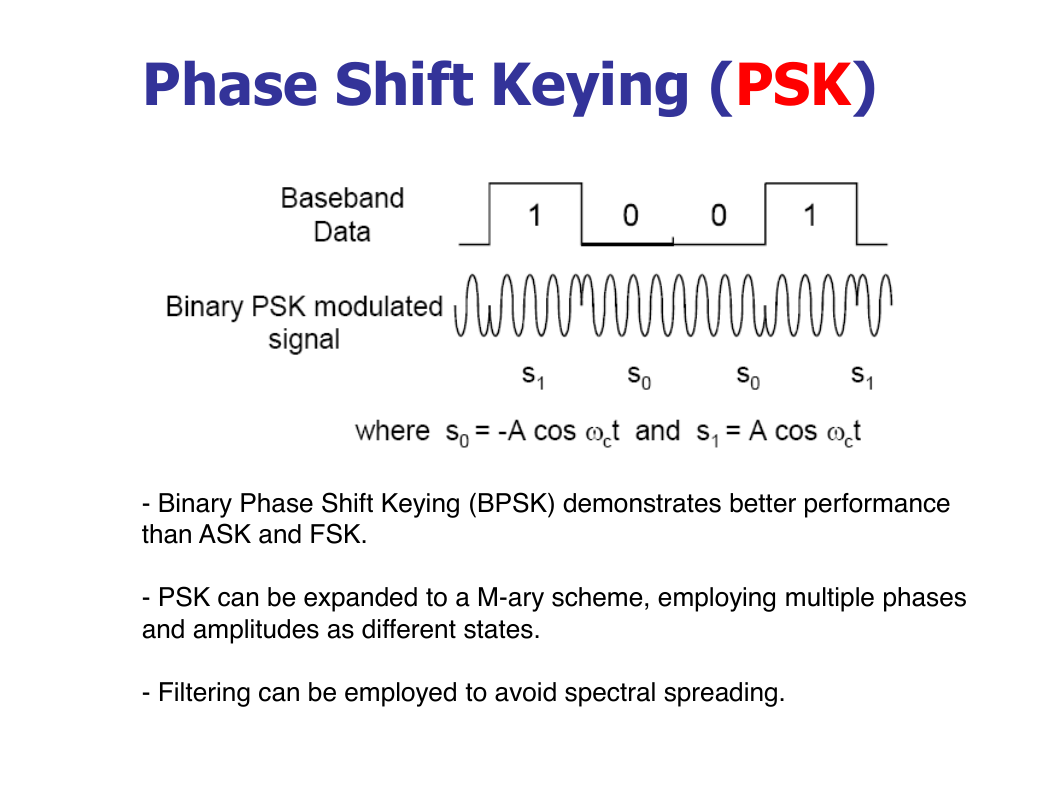
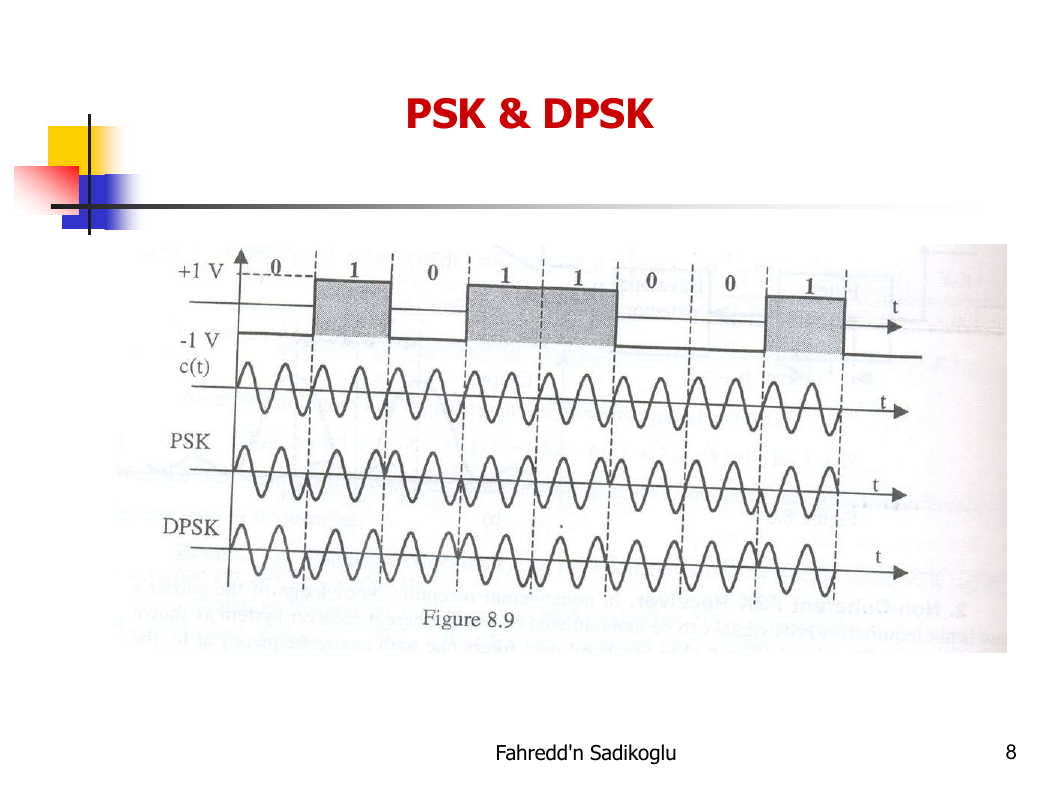








 2023年江西萍乡中考道德与法治真题及答案.doc
2023年江西萍乡中考道德与法治真题及答案.doc 2012年重庆南川中考生物真题及答案.doc
2012年重庆南川中考生物真题及答案.doc 2013年江西师范大学地理学综合及文艺理论基础考研真题.doc
2013年江西师范大学地理学综合及文艺理论基础考研真题.doc 2020年四川甘孜小升初语文真题及答案I卷.doc
2020年四川甘孜小升初语文真题及答案I卷.doc 2020年注册岩土工程师专业基础考试真题及答案.doc
2020年注册岩土工程师专业基础考试真题及答案.doc 2023-2024学年福建省厦门市九年级上学期数学月考试题及答案.doc
2023-2024学年福建省厦门市九年级上学期数学月考试题及答案.doc 2021-2022学年辽宁省沈阳市大东区九年级上学期语文期末试题及答案.doc
2021-2022学年辽宁省沈阳市大东区九年级上学期语文期末试题及答案.doc 2022-2023学年北京东城区初三第一学期物理期末试卷及答案.doc
2022-2023学年北京东城区初三第一学期物理期末试卷及答案.doc 2018上半年江西教师资格初中地理学科知识与教学能力真题及答案.doc
2018上半年江西教师资格初中地理学科知识与教学能力真题及答案.doc 2012年河北国家公务员申论考试真题及答案-省级.doc
2012年河北国家公务员申论考试真题及答案-省级.doc 2020-2021学年江苏省扬州市江都区邵樊片九年级上学期数学第一次质量检测试题及答案.doc
2020-2021学年江苏省扬州市江都区邵樊片九年级上学期数学第一次质量检测试题及答案.doc 2022下半年黑龙江教师资格证中学综合素质真题及答案.doc
2022下半年黑龙江教师资格证中学综合素质真题及答案.doc